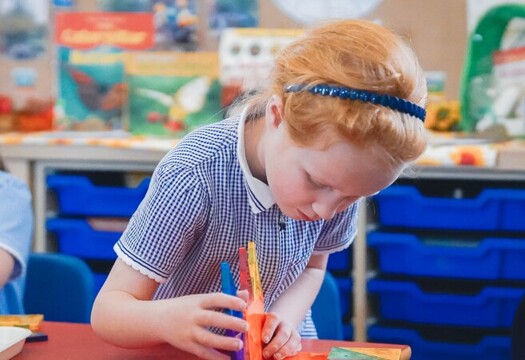- Home
- Curriculum
- Subjects
- Design Technology
Design Technology
Our DT curriculum follows the content and sequencing of the Primary Knowledge Curriculum (PKC), which is designed to be both knowledge-rich and coherently sequenced.
The EYFS Expressive Arts curriculum provides the foundation for our DT curriculum, integrating early experiences in art and DT through exploratory, hands-on sessions. Children develop basic design, making, and evaluative skills while building fine and gross motor control, supporting their practical work in later years. EYFS units are linked to PKC Understanding the World themes and sequenced to ensure continuity, preparing children for the structured DT curriculum in Key Stages 1–2.
The primary curriculum aims to inspire pupils to understand the important role of design and the creation of products in society, fostering creativity, practical skills, and problem-solving. It is structured around three areas: Cook, Sew, and Build, with each year group completing a unit in each area annually. Two key aspects — environment and sustainability and enterprise and innovation — are interwoven throughout, highlighting enduring and contemporary concerns of modern design. Each unit sets out the concepts and skills pupils are expected to learn, which build progressively across the six years of primary education.
In Cook, pupils develop culinary skills from simple recipes to, in Year 6, creating a mezze-style meal with multiple small dishes. Alongside cooking, they explore food concepts such as nutrition, seasonality, food production, transportation, and global cuisines.
In Sew, pupils practise using fabric and thread to learn basic sewing techniques, creating objects that demonstrate embroidery, appliqué, weaving, and plaiting. Concepts such as fabric properties, fast fashion, industrialisation, waste, recycling, and pollution are integrated into these practical activities.
In Build, pupils learn to create structures, mechanical and electrical devices, and other products such as cars, moving cards, toys, and books. Year 6 culminates in designing solutions for real users, for example, a water wall for Reception children. Build units also explore scientific concepts such as force, motion, and material properties, linking closely to the science curriculum.
All Sew and Build units follow a clear design process: research and investigate, design, make, use, and evaluate. Pupils explore existing products, generate ideas and prototypes, consider purpose, function, and appeal, and evaluate their work against criteria they devise. Learning about fundamental concepts, skills, developments in history, and the influence of key individuals in the field are interleaved into this process-driven structure. Discussion, selection of materials, and tool use are all integrated into the learning process.
By the end of primary school, pupils have developed creative, technical, and practical expertise. They are confident in designing and making high-quality products, understand the role of design in society and sustainability, and are prepared to continue their Design & Technology journey in secondary education.
